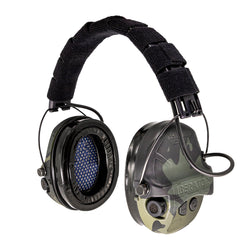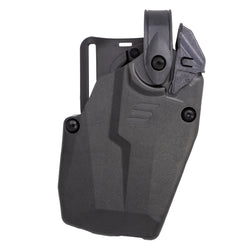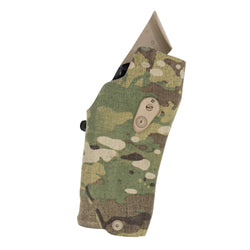The Marine Raiders stand as one of the most storied and transformative units in American military history. From their audacious beginnings in World War II to their modern incarnation as cerebral warriors in the age of integrated deterrence, the Raiders have consistently redefined what it means to be elite. Their journey is not just one of tactical innovation, but of cultural and doctrinal evolution, bridging the gap between brute force and intellectual agility.
Carlson’s Raiders and the Birth of American Special Operations
The Marine Raiders were born out of necessity and vision. In early 1942, as the United States grappled with the realities of war in the Pacific, the Marine Corps sought to create a specialized unit capable of executing amphibious raids and guerrilla-style operations behind enemy lines.
Lieutenant Colonel Evans F. Carlson, inspired by his time observing Mao Zedong’s 8th Route Army in China, proposed a radical concept: a commando-style force built on egalitarian principles, small-unit autonomy, and deep physical and mental conditioning.

Carlson’s 2nd Raider Battalion, often called “Carlson’s Raiders,” was formed with support from President Franklin D. Roosevelt, whose son James Roosevelt served as Carlson’s executive officer. The unit’s ethos was encapsulated in the phrase “Gung Ho,” meaning “work together,” and emphasized mutual respect between officers and enlisted men, ethical indoctrination, and decentralized decision-making.
Their first major test came in August 1942 with the raid on Makin Island. Though tactically mixed, the operation demonstrated the Raiders’ ability to strike swiftly and unpredictably. Later that year, Carlson led the famed “Long Patrol” on Guadalcanal, a grueling 30-day mission that resulted in over 500 enemy casualties and showcased the Raiders’ endurance and unconventional prowess.

Despite their success, internal Marine Corps politics and skepticism about elite units led to the Raiders’ disbandment in 1944. Yet their legacy would echo through decades of military doctrine.
Disbandment to Resurrection: The Raider Legacy Reborn
After WWII, the Marine Corps returned to its traditional structure, and the Raider battalions were dissolved. For decades, the Corps resisted integration into U.S. Special Operations Command (SOCOM), preferring to maintain its expeditionary identity through Force Reconnaissance units. However, the post-9/11 landscape demanded a reevaluation.
In 2003, the Marine Corps launched a pilot program—MCSOCOM Detachment One (Det 1)—to test the viability of Marine special operations within SOCOM. Det 1 performed admirably in Iraq alongside Navy SEALs, paving the way for the establishment of Marine Forces Special Operations Command (MARSOC) in 2006.
Initially, MARSOC operated without the Raider name. But in 2014, Commandant Gen. James F. Amos officially aligned MARSOC with the WWII Raiders, reflagging its subordinate units as the Marine Raider Regiment, Marine Raider Support Group, and Marine Raider Battalions. This move wasn’t just symbolic. It was a doctrinal affirmation of the Raiders’ place in the pantheon of American special operations.
Inside the Mind of a Cognitive Raider
Modern warfare has evolved into a domain where mental acuity is just as critical as physical strength. In response, Marine Forces Special Operations Command (MARSOC) has adopted the concept of the “Cognitive Raider,” a Marine who embodies not only tactical proficiency but also intellectual agility, strategic foresight, and cultural awareness. This shift reflects a broader understanding that success in future conflicts will hinge on the ability to think creatively, adapt quickly, and operate effectively across diverse environments.
Guided by the Marine Special Operations Forces 2030 vision, the Cognitive Raider initiative emphasizes the importance of sound judgment and innovative thinking in complex operational settings. It promotes cross-functional teamwork that spans multiple domains, encouraging Marines to collaborate across disciplines and units.
Continuous learning is a cornerstone of this transformation, with Marines engaging in seminars and symposia designed to expand their strategic understanding and challenge conventional approaches. Equally vital is the ability to navigate human terrain and influence networks, recognizing that cultural insight and psychological awareness are essential tools in modern conflict.
To support this intellectual evolution, MARSOC launched the Cognitive Raider Symposium in 2019. This annual event convenes thought leaders from the military, academia, and strategic communities to explore emerging challenges and opportunities. Discussions span topics such as irregular warfare, great power competition, and enterprise-level agility, all aimed at equipping Raiders with the mindset and tools needed to thrive in rapidly shifting global dynamics.
Through this initiative, MARSOC is cultivating a force that is not only lethal but also deeply thoughtful and ready to confront the complexities of tomorrow’s battlefield with clarity and purpose.

This intellectual evolution reflects a broader truth in special operations: humans are more important than hardware. The Cognitive Raider is not just a fighter but a strategist, diplomat, and innovator.
Marine Raiders in the Age of Integrated Deterrence
As the U.S. pivots toward strategic competition within an era defined by strategic competition with near-peer adversaries like China and Russia, the Marine Raiders have emerged as a critical force capable of operating in the ambiguous “gray zone” of conflict. This domain is characterized not by open warfare but by subtle influence, persistent reconnaissance, and strategic deterrence, where shaping perceptions and gathering intelligence are just as vital as kinetic action.
Central to the U.S. defense strategy is the concept of integrated deterrence, which demands fluid coordination across all domains: land, sea, air, cyber, and space. Marine Raiders play a pivotal role in this framework. They conduct littoral special reconnaissance in contested maritime zones, gathering intelligence and maintaining situational awareness in areas where conventional forces may be unable to operate freely. In denied environments, they enable joint fires and maneuver, facilitating precision strikes and tactical movement despite adversarial interference.
Their operations also harness multi-domain effects through advanced sensing technologies and data fusion, allowing them to detect, interpret, and act on complex signals across the battlespace. Beyond combat, Raiders contribute to strategic stability by building alliances and enhancing partner capacity through foreign internal defense (FID) missions, training and advising allied forces to strengthen regional resilience.
In the Indo-Pacific, their role is especially crucial. As part of the Marine Corps’ stand-in force, Raiders are expected to deploy within adversary weapons engagement zones, leveraging their small-unit agility and cutting-edge technology to sense threats, disrupt enemy plans, and shape the operational environment. Their presence and capabilities offer a forward-deployed deterrent, ready to respond swiftly and decisively in one of the world’s most strategically contested regions.

SOCOM’s Quiet Professionals: The Raiders Today
Within SOCOM, the Marine Raiders are known as “quiet professionals”—a nod to their humility, precision, and effectiveness. Unlike Force Recon, which supports Marine divisions, Raiders operate independently under SOCOM, executing missions that span direct action, counterterrorism, unconventional warfare, and strategic reconnaissance.
Their presence ensures the Marine Corps has a seat at the SOCOM table, access to joint resources, and influence in shaping the future of special operations. But more than politics, the Raiders bring a unique amphibious and expeditionary flavor to SOCOM, one rooted in their WWII origins and honed through decades of evolution.
Today’s Raiders are equipped with loitering munitions, small drones, and AI-driven data aggregation tools. They operate in small teams capable of sensing and striking with precision, often in environments where larger forces cannot tread.

Final Thoughts
From the jungles of Guadalcanal to the digital battlespace of tomorrow, the Marine Raiders have remained at the cutting edge of warfare. Their journey from Carlson’s radical vision to the Cognitive Raider of today is a testament to the enduring power of innovation, adaptability, and esprit de corps.
As global threats evolve, so too will the Raiders. But their core mission remains unchanged: to be the tip of the spear, the thinkers behind the trigger, and the quiet professionals who shape history from the shadows.











